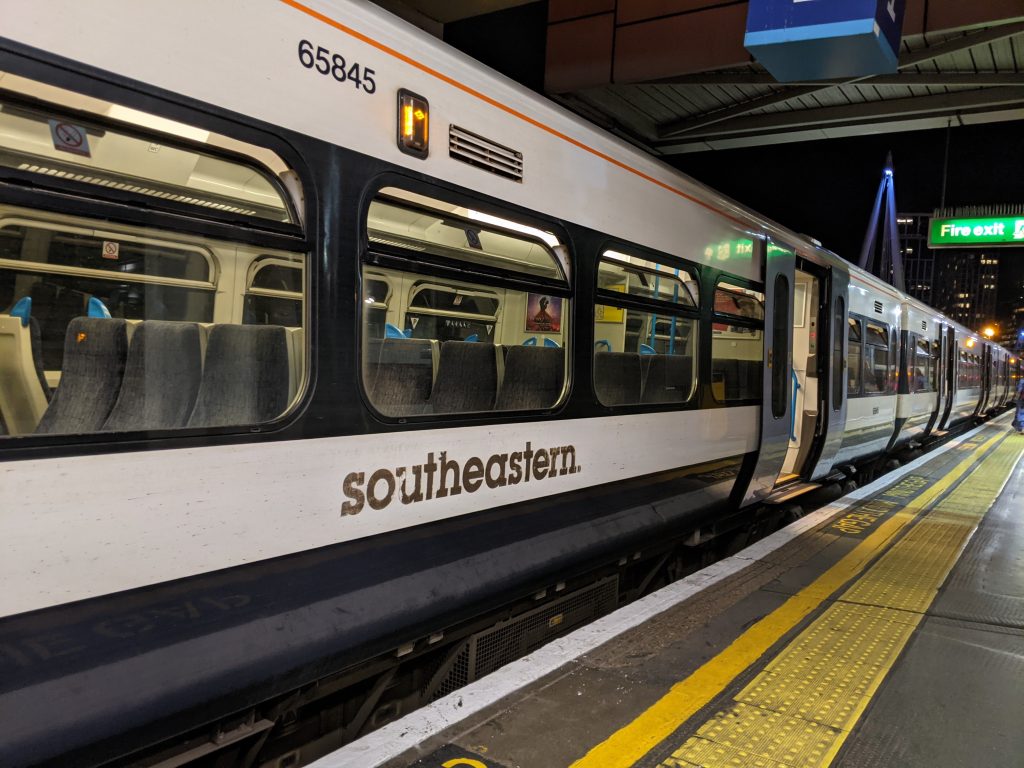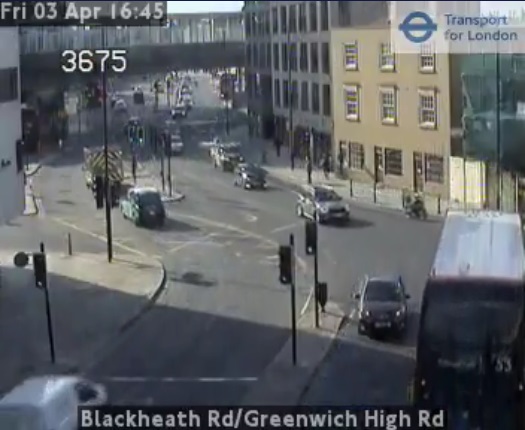Night out in the West End? Southeastern cuts make getting home a drag
Back in December Southeastern controversially introduced a new timetable without consultation. It raised a large number of objections for various reasons, with some gaining more prominence than others.
One such complaint was that overcrowding would follow, and this week in particular has seen a number of complaints about overcrowding and difficulty boarding trains along the Sidcup line.
Other complaints included altering terminals and switching loop line services which gained much attention, but one change that didn’t was a reduction in evening services.

Since December the number of trains departing central London have been cut with lengthier gaps between services. Not great for London’s already beleaguered nightlife.
My own journeys since have shown large numbers of people waiting for trains at London Bridge – and with poor service intervals crowds can quickly build up as more people are forced to change.
When these changes were proposed, Southeastern stated people heading to Charing Cross should take the first train – which could be to Cannon Street – then change to frequent Charing Cross services.

However, it’s a different story if travelling in the opposite direction. With recent cuts, passengers can take the train from Charing Cross to London Bridge and then face a long wait for trains running on a specific line.
It can be over 20 minutes even in the peaks to stations such as Greenwich, and at night that gets longer. The days of at least getting to wait in a warm train for some time at Charing Cross are gone.
Heading to Deptford or Greenwich? The gaps are up to 33 minutes and the last train now departs earlier than it did before. Not great for a major world city serving very busy towns.

I’ve had a couple of convoluted journeys now, which at least gave me time to see how the enforced changes – even late at night – see many having to change, slower journeys and in the end a good chance it’ll put off people staying out in central London.
For alternatives, the DLR doesn’t serve the West End. At least it runs every 5-10 minutes which shows the gulf in service levels between the apparent “Metro” rail network and many TfL services.

Then there’s the Elizabeth line, though again not great for some depending of course on where you’re going and it’s still a longer walk for Tottenham Court Road from much of the West End. None of this is insurmountable, but the poor rail service is needlessly making getting homes trickier. The argument around Lewisham junction and congestion doesn’t really exist post 11pm anyway when services are less frequent.
The difference between DLR and tube services much of London enjoys and Southeastern Metro – that a great deal of SE London replies upon – is substantial bot day and night. And at a time London’s nightlife is struggling, ensuring that journeys home are laborious, convoluted and slow for many does nothing to help.
Running a site alone takes time and a fair bit of money. Adverts are far from enough to cover it and my living costs as a private renter.
You can support me including via Paypal here Another option is via Patreon by clicking here You can also buy me a beer/coffee at Ko-fi here There's also a Facebook page for the site here Many thanks






Too right John, getting up to West is ok as there are frequesnt connections at LBG to CHX, but the wait at LBG on a lateish return (and thats not even late by Continental standards) connections and frequency are poor. Los Madrillenos- people from Madrid! don’t even go ut for dinner until 9 or 10pm, so what is the problem here? Why can a major city not have decent public transport all over? I feel sorry for those investing in Kidbrookes property, their transport options are awful, with roads congested even before all new planned housing finished.
The Blackheath Society highlights that the writing campaign should be urgently continued, as the window for influencing the May timetable is the end of January. A rapid response is most important! Would you consider advising your readers of this deadline?
Moving from east London south of the river was a shock. From tube, trains every 5 mins until around 1am and then 24 hrs on weekends to the threadbare southeastern rail service was surprising. Such an arbitrary difference based on either side of a river. London Overground also much better though not from west end.
Had a similar experience recently where we had to wait for 10 minutes at Charing Cross, then change at London Bridge and wait another 20 at London Bridge. What would have taken 10 mins all in 4 weeks ago took 40. Trouble is other options are a drag too meaning a tube then change. W just wanted a few drinks near Charing Cross after work on the Strand and the lizzie line is also quite a walk from there. No fast options like before. Bad for nightlife and pubs as you say as I will skip it if going home take four times as long.
Question that’s important is ‘what comes first’?- Either vastly improve Thameslink/South Eastern train frequencies and hours of operation to encourage people out of their cars and taxi’s, OR wait until more use the trains before increasing frequencies and hours? What the train operators are doing is cutting services because there’s fewer users post pandemic, to increase profits (or prevent losses). It’s not a system currently where an efficient transport network south of Thames will encourage more on to it, the train operators don’t think like that, they are not in the business it seems of improving London’s transport, simply looking at their current post-pandemic revenue v their costs. More cycle lanes have proved to attract more cyclists, as more trains will attract more passengers and reduce road congestion. A bit of thought also about on-board and station safety, security and staffing and facilities at stations too, especially at off peak times, will attract more passengers. Instead the talk is of cutting staff on-board and at stations. It’s like austerity is ingrained here now, we’ve had it so long and still looking toward it. No initiative to invest, just talk the political talk about investing without Govt input.
I was heading to a matinee theatre show in Dartford last week and cancelled my tickets because of uncertainty of trains home around 5-6pm! – and the thought of quiet daytime trains security on-board was an issue also, even for a man, but I’m sure even more so for many ladies travelling alone (in general, of course exceptions not a rule). Last train was 5.30 back to Greenwich due to train strike next day! I support all public sector strikes as private sector pay racing ahead with inflation whilst bills are increasing massively for all, but trains do need safety, reliability, frequency and punctuality to attract business, and that means more Govt money invested in all 3- staff,infrastructure and trains. Re-nationalise? Maybe, but I remember dire services then too, so investment is crucial whether private or public. Turn over to TFL? Current Govt doesn’t like that for political reasons, and anyway same story re investment, clash between Tory central Govt and Labour London mayor, whereas this should be a consensus for London, imo with London’s mayor (whoever it is) holding the purse strings. Cut the political backbiting out of it and do what’s good for our city and that’s how you attract investment to a global city. North of river has better services but also i’m guessing a massive passenger use compared to road traffic, which is higher in the South. So frequencies are bound to be better north, but what came first- the usage or the investment? Will big investment in London’s rail ever happen here south of the river to attract the new home owners and renters from the massive developments, or will we carry on playing catch up and sitting in traffic?
Train companies don’t make profits now as before but get a set fixed fee. All fares go directly to the Treasury, and they alongside the DfT are pushing cuts across the country. Southeastern is a directly owned DfT entity and the Thameslink operator GoVia get a set fee from government.
Government and DfT civil servants have a tighter control now over fares and just about everything else than under British Rail, who at least had a degree of autonomy and fought their corner against Treasury resistance for investment. Now the DfT do the Treasury bidding for cuts, cuts, cuts.